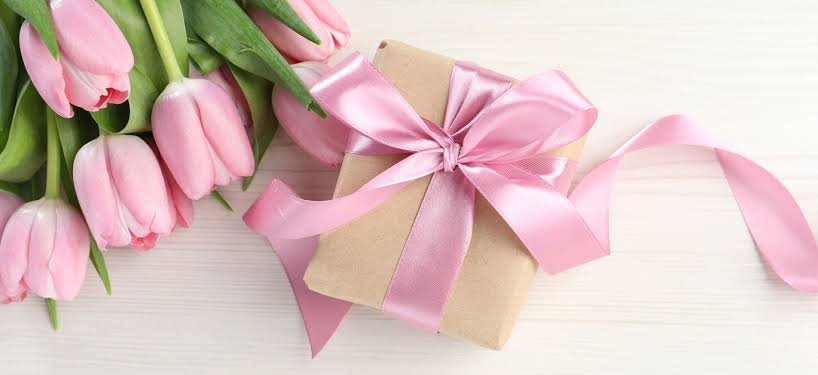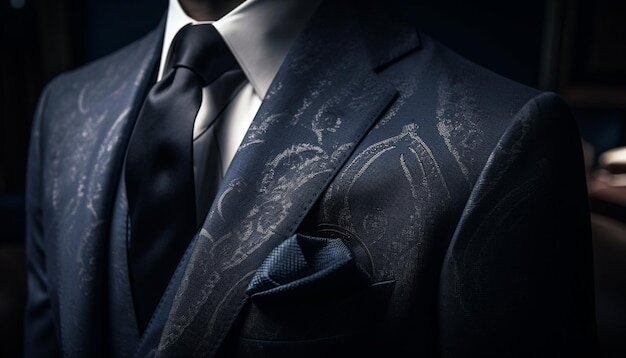Fashion
Can Sterling Silver Wedding Bands Withstand Daily Wear and Tear?

Wedding bands symbolize the eternal bond between two souls, but alongside their symbolism, durability is a crucial consideration. Sterling silver, known for its lustrous appearance and affordability, often enters the conversation when discussing wedding bands. However, there’s a lingering question: Can sterling silver withstand the rigors of daily wear and tear?
This article delves into the intricacies of sterling silver wedding bands, exploring their durability, maintenance, and suitability for a lifetime commitment.
Understanding Sterling Silver
Sterling silver, composed of 92.5% silver and 7.5% other metals (usually copper), boasts a brilliant shine and timeless appeal. While silver in its pure form is too soft for practical use in jewelry, alloying it with other metals enhances its strength and durability. This alloy, known as sterling silver, strikes a delicate balance between elegance and resilience, making it a popular choice for various jewelry pieces, including wedding bands.
Durability Factors of Sterling Silver
The durability of sterling silver wedding bands hinges on several key factors:
1. Alloy Composition: The addition of metals like copper fortifies sterling silver, enhancing its resistance to scratches, dents, and deformations. A higher proportion of silver in the alloy might compromise durability, while excessive amounts of other metals can affect its appearance and tarnish resistance.
2. Manufacturing Technique: The craftsmanship behind the creation of sterling silver wedding bands significantly influences their durability. Bands crafted with precision and attention to detail are less prone to structural weaknesses and are better equipped to withstand daily wear.
3. Wear and Tear Patterns: Daily activities and lifestyle choices play a pivotal role in determining the longevity of sterling silver wedding bands. Individuals engaged in physically demanding professions or hobbies might subject their rings to more wear and tear compared to those with more sedentary lifestyles.
Pros and Cons of Sterling Silver Wedding Bands
Before committing to sterling silver wedding bands, it’s essential to weigh their advantages and limitations:
Pros:
1. Affordability: Sterling silver offers an attractive option for couples seeking elegant wedding bands without breaking the bank.
2. Aesthetic Appeal: The brilliant luster of sterling silver complements a wide range of styles, from classic to contemporary, adding a touch of sophistication to any ensemble.
3. Versatility: Sterling silver wedding bands can be easily customized with engravings or embellishments to reflect the unique personalities and preferences of the couple.
Cons:
1. Tarnish Susceptibility: Sterling silver is prone to tarnishing when exposed to air, moisture, and certain chemicals. Regular maintenance, such as polishing, is necessary to preserve its shine.
2. Durability Concerns: While durable, sterling silver is softer than alternative metals like gold or platinum, making it more susceptible to scratches and dents over time.
3. Allergic Reactions: Some individuals may experience skin irritation or allergic reactions to the metals alloyed with silver, particularly if they have sensitivities to nickel or other common alloys.
Maintenance Tips for Sterling Silver Wedding Bands
To ensure the longevity and pristine appearance of sterling silver wedding bands, proactive maintenance is essential:
1. Regular Cleaning: Gently clean your wedding bands with a soft cloth or a designated silver polishing cloth to remove dirt, oils, and tarnish buildup. Avoid abrasive cleaners or brushes that may scratch the surface.
2. Storage: Store your sterling silver wedding bands in a dry, airtight container when not in use to minimize exposure to moisture and air, which can accelerate tarnishing.
3. Avoid Exposure to Harsh Chemicals: Remove your wedding bands before engaging in activities involving harsh chemicals, such as household cleaners or chlorine-based swimming pools, to prevent damage and tarnish.
4. Professional Maintenance: Periodically, consider professional cleaning and inspection of your sterling silver wedding bands to address any signs of wear and ensure their structural integrity.
Can Sterling Silver Weding Bands Withstand Daily Wear And Tear?
Sterling silver wedding bands offer timeless elegance but require careful consideration for daily wear. While durable, their susceptibility to scratches and tarnishing necessitates proactive maintenance. Factors such as alloy composition and manufacturing technique impact their resilience. With proper care, including regular cleaning and storage, sterling silver bands can withstand daily wear and tear. However, they may not be as durable as alternative metals like platinum or titanium in the long run.
Conclusion
Sterling silver wedding bands, with their timeless elegance and affordability, hold undeniable appeal for couples embarking on the journey of marriage. While they may not possess the indestructible qualities of metals like platinum, sterling silver bands can withstand daily wear and tear with proper care and maintenance. By understanding the factors influencing their durability and embracing proactive maintenance practices, couples can ensure that their sterling silver wedding bands continue to symbolize their enduring love and commitment for years to come.
Fashion
Convey Your Emotions in a Meaningful Way with Personalised Floral Gifts

Sending flower arrangements to your loved ones is not a lovely gesture but an excellent way to express your deep love and care. Floral gifts are a great way to brighten their day and bring a genuine smile. In the hustle and bustle of everyday life, it is difficult to visit offline stores, that’s where online flower delivery services come to your rescue.
It is easy to pick a pre-made bouquet and send it as a gift, but there is a different charm to a personalised floral arrangement. Hence, if you want to make your dear ones’ day extra special, take time to personalize a floral arrangement to surprise them. This sweet gesture will create a lasting impression on their mind and hearts. So, if you want to send flowers to mumbai with a personal touch, keep reading this blog to explore some effective tips on customizing your floral gift.
6 Wonderful Tips for Personalising Your Floral Gift
Do you know adding a personal touch to any gift multiplies its value? Well, the same goes with the floral arrangements too. The value and power of unique personalized gifts unmatched. So, count on our special tips to tailor your flower arrangement.
1. Consider the Favourite Colours and Flowers of Recipient
The first aspect of making a personalised flower arrangement is choosing the preferred flowers and colours of your loved ones. It is a simple yet powerful gesture that showcases the amount of effort you have made to put together to create the floral gift. Also, it symbolises how much you love and care for them, enhancing the entire gifting experience.
2. Add Personal Touches to the Arrangements
To add more value and make your gift more special consider adding personal touches to it. You don’t have to pour your blood, sweat or tears into this, even a small effort like adding a handwritten note, attaching a quote (complementing the occasion), or a meaningful picture to your floral arrangement can make a significant impact and create lasting memories in the recipient’s mind.
3. Experiment with Different Types and Colours of Flowers
If you want to create a unique floral arrangement, that’s different from the rest, try mixing and matching different varieties of flowers. You can do some permutation and combination in different shapes, sizes, textures, and colours of the blooms to add more visual appeal and depth to your floral gift. Try making a bouquet that compliments the occasion or the personality of the recipient. Or you can order an online flower bouquet of assorted flowers matching the vibe or preferences of your loved one.
4. Choose Flowers with Symbolism Reflecting the Occasion
The world of flowers has its own language. To add more meaning to your gift, choose flowers with symbolism related to the occasion or the message you want to convey to the receiver. For instance, if it’s your wedding anniversary and you want to express love and gratitude towards your spouse for always being there and supporting you, a heart-shaped arrangement of deep red roses will be appropriate for the occasion.
5. Send Flowers in an Astonishing Setting
When looking for out-of-the-box ideas to surprise your loved ones with a floral arrangement, try experimenting with containers to arrange the flowers. For instance, instead of using conventional glass vases, try online flower delivery in India in different containers. It can be a ceramic pot, a personalised or decorative tin, or even a vintage teapot.
6. Add Meaningful Gifts to The Floral Arrangements
To add more meaning to your gift, you can pair it with sweet treats or thoughtful gifts like cakes, chocolates, sweets, personalised coffee mugs, cushions or customised wall art pieces. You can find unique flower combos, on various websites and send them to your loved ones based on the occasion, like flowers with chocolates for Valentine’s Day or flowers with cakes and teddies for birthdays and anniversaries.
Wrapping Up
Personalising a floral gift makes it extra special and it leaves an emotional impact on the receiver’s mind. However, if you don’t have enough time to do all the customizations on your own, a gifting platform like OyeGifts that offers personalisation options can be your saviour. With this trusted brand by your side, you only have to share your preferences with them, and their expert team will do the rest of the job.
Fashion
Why Should You Choose Tailoring Services in Bangkok
Discover why Bangkok is the ultimate destination for tailoring services, offering exceptional quality, bespoke designs, and unbeatable craftsmanship.

Bangkok is quickly becoming known as one of the world’s best destinations for bespoke suit Bangkok tailoring services. With an abundance of skilled tailors and high-quality fabrics, Bangkok offers unmatched value and craftsmanship when it comes to tailor-made suits Bangkok. Here are the top reasons to get your next bespoke suit made in Bangkok.
Factors to consider while choosing a Tailoring Service in Bangkok are-
- Unparalleled Expertise and Craftsmanship
Bangkok is home to some of the most skilled and experienced tailors in the world. Many of the top tailor in Bangkok workshops employ master tailors with decades of experience in making fully handcrafted, customized business and formalwear suits. They bring an eye for detail and perfection to their work that results in suits made to the highest standards and specifications. The craftsmanship of the finishes, stitching, and cutting rivals what you would find in famous bespoke tailoring streets like London or Milan. Yet the prices in Bangkok are a fraction of what you would pay in those places.
- Specialized Fit and Attention to Your Body Shape
One of the hallmarks of bespoke tailoring is the personalized precision pattern making and cutting to match the customer’s exact body shape. Rather than taking standardized sizes, Bangkok’s tailors will carefully measure you in dozens of places to create a paper pattern unique to your bodily dimensions and posture. This results in a tailored fit beyond what is possible in off-the-rack clothing. The garments will drape perfectly on your body. Throughout the process, the tailors make adjustments and accommodations based on your inputs to ensure you get the desired comfort and look.
- Wide Variety of Fabrics and Customization Options
From super fine wool and cashmere to rare silks, Bangkok’s suit tailors have access to an impressive array of high-quality cloths from around the world, including luxury Italian and English fabrics. This allows you extensive customization when it comes to colors, patterns, textures, and fabric weights. Want a lightweight tropical wool suit or a heavier herringbone tweed for winter? They can create it for you. Beyond fabrics, you have abundant style options for lapels, vents, pockets, buttons, lining, and stitching – allowing you to design a suit to meet both your comfort needs and sartorial tastes.
- Great Value for Money
Given the mastery of the tailors and the quality of fabrics available, bespoke suits in Bangkok deliver tremendous value. Fully tailor-made suits in Bangkok of the finest fabrics can cost $2000+ in Europe or North America. In Bangkok, you can get a suit of comparable quality for $500-800, including quality silk linings, premium buttons, and expert alterations. The lower costs of real estate and labor allow tailors to price bespoke suiting competitively while delivering refinement, stitches-per-inch, and conscientious fitting process on par with the world’s best tailoring houses.
- Fast and Reliable Delivery
Reputable tailors in Bangkok operate efficient operations capable of turning around a handmade, customized suit quite swiftly compared to other bespoke tailoring hubs. It’s common to complete a suit within a week. This makes the city an ideal place to get fitted for a quality bespoke suit even if your time in Bangkok is limited, such as during a vacation. The tailors also have longstanding relationships with shipping companies to ensure prompt, reliable worldwide delivery. So you can have your suit delivered to your doorstep wherever you live.
Tips for Finding the Best Tailors in Bangkok
- Shop Around Before Deciding
Visit a few shops, check reviews online, and inspect the quality of the fabric samples and completed suits on display. Pay attention to the details and construction – this will give you an idea of the tailor’s skills and standards. You’re looking for fine, even stitching, clean seams, perfectly matched patterns across seams, and well-finished buttonholes. Don’t rush the decision or get swayed by clever sales tactics.
- Seek Out Recommendations
Ask hotels, restaurants, and others in the expat community who they would recommend for suit tailoring services. Narrow options to well-reviewed tailors known locally for turning out high-quality bespoke suits for both local and overseas clients. These will be the workshops manned by the top master tailors in the city.
Conclusion
Getting a custom-made suit in Bangkok is an opportunity to experience master craftsmanship while also getting an impeccably fitted suit of the finest materials. Do your research, find an established tailor you connect well with, communicate exactly what you want, and they will deliver a wardrobe showpiece you’ll enjoy wearing for years to come. So next time you need a new suit, consider the talented best tailor in Bangkok shops to make something truly special and unique.
Fashion
The Complete Guide to Tailor Made Suits for Men
Discover everything you need to know about tailor-made suits for men, from fabric selection to perfect fit and style tips.

Friends, let’s be honest – there’s nothing quite like slipping into a sharp, well-fitted suit. It’s an instant confidence booster that commands respect and turns heads wherever you go. But achieving that perfect tailored look straight off the rack? Next to impossible unless you happen to have a cookie-cutter physique.
That’s where tailor-made suits step in. Having a custom suit made by a premium tailor in Bangkok is like making a smart investment that keeps on giving every time you put it on. This is your ultimate roadmap to the world of personalized suits and why it’s a total game-changer for any guy’s closet.
The Beauty of Bespoke
We’ve all had those moments – wrestling with a suit that just doesn’t feel like it’s meant for you. Maybe the shoulders are too broad, the sleeves too short, or it’s all wrinkled in the wrong spots. It’s enough to make even the slickest guy feel a bit off his game.
When you opt for a tailor-made suit crafted by a custom tailor in Bangkok, those fit issues become a thing of the past. These artisans take a full set of measurements and details observations about your unique body shape and posture. Every element, from the jacket length to the pants break, is made to measure for you and only you.
But the personalization goes far beyond just nailing that stylish silhouette. With bespoke suiting, you get to hand-select premium fabrics, accents, and stylistic details that reflect your individual flair. Thinking of a bold plaid paired with a luxurious silk lining? An impeccably dressed Bangkok tailor can make it happen.
Playing the Long Game
While custom suiting does involve a bigger upfront investment compared to rental or off-the-rack options, you have to think bigger picture. A well-made tailor-made suit from an experienced Bangkok tailor can last for decades with proper care and little tailoring tweaks along the way.
Plus, you’re avoiding that dreaded scenario of showing up to an important event or client meeting in the same ill-fitting rental tux or suit as three other guys in attendance. With custom suiting, your look is unique, distinctive, and properly fitted – giving you a certain swagger that rental rigs just can’t replicate.
The Bespoke Process
If the idea of a made-to-measure suit has piqued your interest, here’s a glimpse into the typical custom suit Bangkok experience with a respected Bangkok tailor:
- First, you’ll have an in-depth consultation to discuss your personal style preferences, the occasions you’ll want suiting for, must-have features, and more. This helps guide the tailor’s fabric recommendations and designs.
- From there, it’s into the measuring room for a full set of precise measurements and observation of your stance, posture, and unique physique. The tailor uses these measurements, not just simple sizes, to draft a pattern just for you.
- Next, you’ll collaborate on all the finer details by selecting luxury fabric options, lining, buttons, and accents. This is where you can let your personal style sense shine by creating something totally unique.
- With those specifics locked in, it’s time for your Bangkok tailor to start construction on your made-to-order suit. Expect at least a couple of fittings during this phase to refine every element for a crisp, body-defining finish.
- Finally, you’ll get that grand unveiling – slipping into a garment that conforms flawlessly to every curve, courtesy of your tailor’s steady hands and trained eye. It’s the ultimate sartorial investment that will make you feel like a million bucks for years to come.
Developing a Signature Look
Once you experience the luxury of custom tailor-made suits, there’s a good chance you’ll be hooked. Having a seamless experience with a talented Bangkok tailor opens up a whole new world of possibilities for developing a signature, personalized look.
You can start building out a capsule collection of suits in varied fabrications and colors to have something fitting for every occasion and season. Work with your tailor to incorporate unique details like a signature lining, chic collar stays, or even a custom embroidered monogram.
Those special individualizing touches are what take bespoke suiting to the next level. Before long, you’ll have a steady rotation of perfectly fitted suits that are unmistakably “you” – from the hounds-tooth tailored for power lunches to the tux with custom shawl lapels for black tie affairs. Getting fitted for tailor-made suits in Bangkok can easily become your newest life-enhancing habit.
Fit for Refined Living
There’s simply no substitute for quality tailor-made suits when it comes to refined living. Every discerning gentleman should experience the transformation of finding their perfect fitted suit at least once.
Start networking with well-reviewed tailors in Bangkok and get ready to turn heads at every corporate meeting, formal event, or dapper night out on the town. With customized suiting, confidence and swagger come standard – along with a look that’s distinctively yours.
-

 Technology9 months ago
Technology9 months agoExploring Entretech.org: Unveiling the Future
-

 Life Style9 months ago
Life Style9 months agoExploring Myfavouriteplaces.org:// blog: A Journey Begins
-

 Technology9 months ago
Technology9 months agoGPT66X: Revolutionizing Language Models
-

 Eentertainment9 months ago
Eentertainment9 months agoThe Flower of Veneration Chapter 1: A Journey into Intriguing Realms
-

 Games9 months ago
Games9 months agoFour Digits to Memorize: Unlocking the Power of Memory
-

 Technology9 months ago
Technology9 months agoAmazons GPT55X: Revolutionizing Natural Language Processing
-

 Technology9 months ago
Technology9 months agoUnlocking the Potential of TrendzGuruji.me for Awareness
-

 Life Style9 months ago
Life Style9 months agoBluefire Wilderness Lawsuit: Unraveling the Legal Landscape








